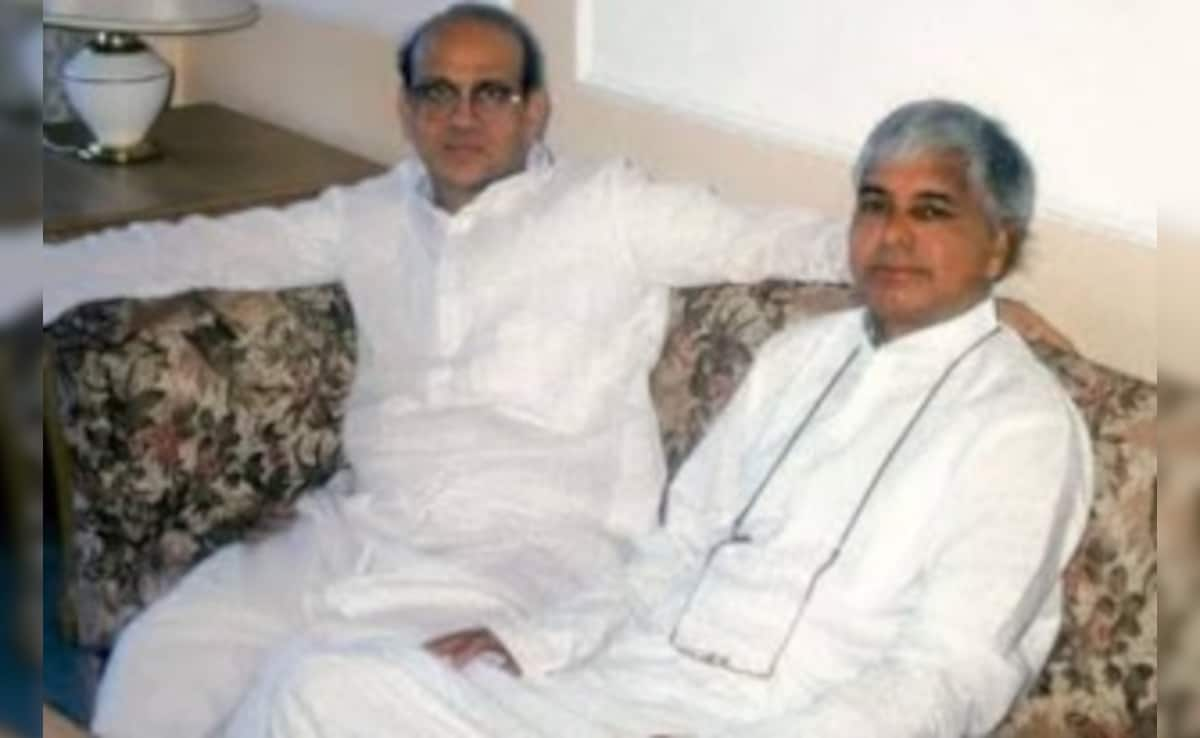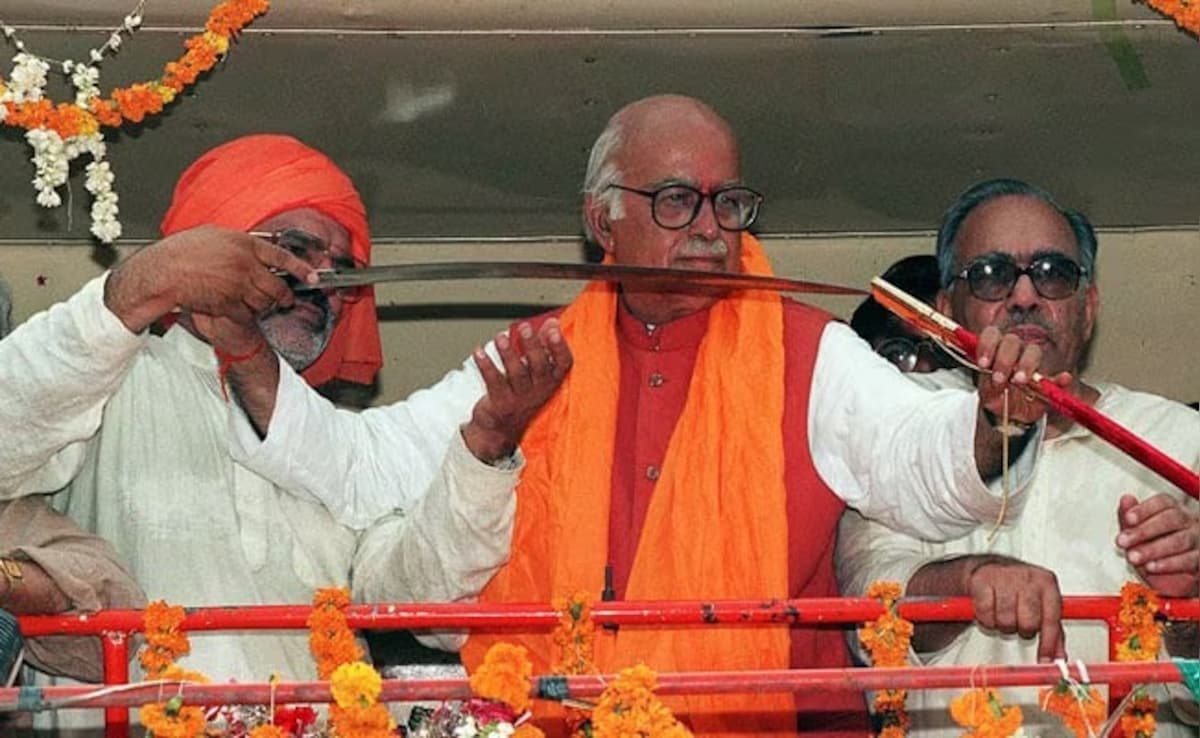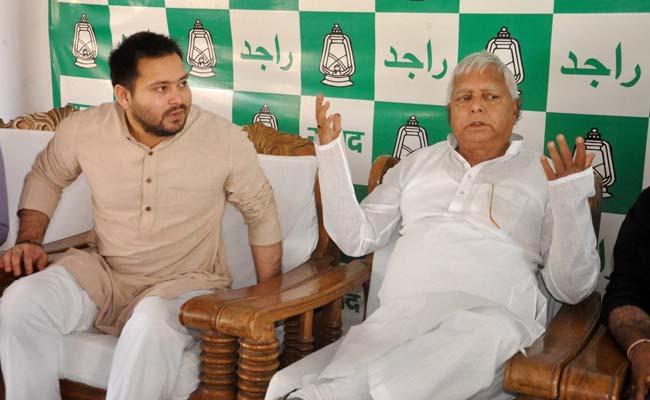How 2 Ms - Mandir And Mandal - Helped Lalu Yadav Find 'MY' Formula In Bihar
Much has been written and said about the MY formula and its role in shaping the montage that Bihar politics is. But how did Lalu Yadav crack this formula that has endured for over three decades?

The Bihar elections are here, and as political pundits attempt to decode the poll arithmetic, one abbreviation has returned to the headlines: MY, or the Muslim-Yadav formula employed by Rashtriya Janata Dal (RJD) founder Lalu Prasad Yadav to rewrite the rules of political battles in Bihar. The veteran politician is now 77, and age-related ailments have forced him to take a back seat in politics, but the MY formula remains the bedrock of his party, now led by his son Tejashwi Yadav.
Much has been written and said about the MY formula and its role in the complex montage that is Bihar politics. But how did Lalu Yadav crack this formula that has endured for over three decades?
Political phenomena are shaped by history, and Lalu Yadav's MY formula was shaped by two Ms -- Mandir and Mandal.
In 1990, two events altered the course of Indian politics -- the VP Singh government's decision to implement the Mandal Commission's recommendations to introduce reservations for backward communities and BJP veteran Lal Krishna Advani's Ram Rath Yatra in demand of the construction of a Ram Temple in Ayodhya. One would make caste the key factor in hinterland politics, and the other would pave the way for the BJP's journey from a party with two MPs to the world's largest political party. But in Bihar, Lalu Yadav was watching, and he would harness these two political storms to turn the windmill of his ambitions.

The Mandal Moment
In the 1989 Lok Sabha election, the Rajiv Gandhi-led Congress fell short of the majority mark. Vishwanath Pratap Singh, a Congress rebel who quit the party after the Bofors scandal, now led the Janata Dal and cobbled together a United Front government with the BJP's support. In August 1990, the VP Singh government implemented the Mandal Commission's recommendations, leading to the reservation of 27 per cent of jobs under the central government and public sector undertakings for people from backward communities.
The move triggered massive protests by the so-called upper castes, with many youngsters immolating themselves to protest reservation. For Lalu Yadav, this was a political jackpot. Backwards constituted 52 per cent of Bihar's electorate. Reservation pitted the so-called upper castes against the backwards, and Lalu Yadav, who had projected himself as the man fighting against caste hegemony, was now Chief Minister. The Mandal moment changed Bihar's political course. For the decade that followed, caste politics in Bihar would trump every other poll issue, be it governance or development, and Lalu Yadav would go from strength to strength.

The Mandir Impact
Lalu Yadav "had just about unwrapped the Mandal magicbox when that other giftpack arrived in his lap," veteran journalist Sankarshan Thakur, who recently passed away in Delhi, wrote in his book, The Brothers Bihari.
LK Advani's Rath Yatra was, in many ways, an open challenge to the VP Singh government. BJP was one of the allies in the United Front government and won 85 seats in the 1989 general election. So, the survival of the VP Singh government depended on the BJP's support. The Prime Minister's hands were tied; he could not stop the Yatra despite wanting to. "He asked Laloo Yadav to stop Advani's rath. Laloo did it with glee and glamour (sic)," Thakur writes.
On October 23, 1990, Advani was arrested in Samastipur and then moved to a government guesthouse in Masanjore near the Bihar-West Bengal border. The same day, Lalu Yadav addressed a massive rally in Patna's historic Gandhi Maidan: "If human beings die, who will ring the temple bell? Who will pray in the mosque? I will not allow communal violence to spread in my state. Whether power stays or goes, I will not compromise on this."
Thakur wrote in his book: "Overnight, Laloo Yadav leaped into national limelight: the man who stopped Lal Krishna Advani, the man who did what most governments in the country had been afraid to do. He became the darling, at once, of Muslims countrywide, and of the left-wing liberal intelligentsia: the gallant saviour of the downtrodden and the minorities."

The Muslim-Yadav Math
The first test of Lalu Yadav's new formula was the 1991 Lok Sabha election, and he passed it with flying colours. Janata Dal, then led by Lalu Yadav in Bihar, won 32 out of the state's 40 Lok Sabha seats. The Janata Dal was routed everywhere but in Bihar.
At the time, backward and extremely backward castes together accounted for about 52 per cent of Bihar's electorate. Muslims made up another 12 per cent. The Congress had for years relied on an upper caste + Muslim + Harijan + sections of extremely backward caste votes. After Mandal and Mandir, the game had changed. Lalu Yadav was now the messiah for backward castes and Muslims. He managed to swing the Muslim vote entirely to this side, and with his backward vote bank, he was virtually invincible. The Rajiv Gandhi government's decision to allow the shilanyas (foundation stone laying) of the Ram Temple had upset the Muslims and turned them against the Congress, and who would they turn to? Lalu Yadav.
In the 1995 Bihar election, the Lalu Yadav-led Janata Dal won 167 Assembly seats, in yet another vindication of his MY formula. Since then, the Congress has struggled to woo the Bihar Muslim voter to its side. The RJD, which was formed when Lalu Yadav split the erstwhile Janata Dal, continues to draw a large chunk of Bihar's Muslim votes.

The New Challenger
The 2020 Assembly polls saw RJD emerge as the single-largest party, but a poor show by the Congress kept the Mahagathbandhan out of power. A key subplot played out in the politically sensitive Seemanchal region, where Asaduddin Owaisi's AIMIM pulled off a stunner by winning five seats. Even though four of these MLAs later switched to RJD, this was an open challenge to a vote bank Lalu Yadav had cultivated over decades.
This also explains why RJD is not willing to accommodate AIMIM despite Owaisi's repeated outreach to join the Opposition bloc.
In the years since Lalu Yadav's winning streak in the 1990s, much has changed in Bihar's political landscape: over the years, NDA has cornered a significant chunk of EBC votes and Muslims have explored other options, but the MY formula still brings considerable political muscle to the RJD. Will that hold true this time, too? We will find out on November 14.
-
Opinion | The Reel Is Over, But The Light Remains: Remembering Dharmendra
From the moment he strode onto the silver screen in the early 1960s, a whirlwind of raw, rustic charm, Dharmendra was an instant phenomenon. He embodied the soul of a transitioning India: tough yet tender, deeply flawed yet utterly lovable.
-
Exclusive - American Mercenaries In Gaza: Who Controls Them, What They Do
This second part of NDTV's exclusive series examines the model of security governance implemented by a mercenary group contracted to guard aid sites in Gaza.
-
Exclusive: Inside An American Mercenary Group Accused Of War Crimes In Gaza
For nearly a year, UG Solutions has become a fixture at at least four GHF distribution sites. Their presence has raised questions: Who regulates them? What are they authorised to do?
-
"Aaya Ji Nitishwa?" A Gandhi Maidan Rally Made Nitish-Lalu Split Official
Gandhi Maidan is set to witness the 10th swearing-in ceremony of Nitish Kumar after NDA's mammoth victory
-
Opinion | The 'Ten-Year Itch' in India-US Defence Relations
Hugs and personal equations between leaders do not make a nation a country of consequence. The fact is that the US would not part with critical technologies, despite all the acronym-rich pacts and treaties being signed.
-
Opinion | What Are Congress And Rahul Up To After Bihar? Hint: 'Jai Jagat Gang'
Instead of introspection, accountability and disciplinary action in the wake of the Bihar verdict, the Congress leadership is busy in a certain 'reward' exercise.
-
Opinion | IND vs SA: How The First Test Became A Lesson In Self-Sabotage
The defeat is not an isolated event; it is symptomatic of a worrying trend. This was India's fourth loss in its last eight home Tests, a shocking statistic when measured against our previous dominance - we had only lost four home Tests in the entire twelve-year span from 2012 to 2024.
-
From Surviving Massacre To Death Sentence, Sheikh Hasina's 50-Year Journey
Five decades after she survived a coup during which her family members were murdered, Hasina has been sentenced to death for crimes against humanity.
-
Explaining Car Bomb VBIEDs: Terrorists' New Tactic, Delhi's New Nightmare
In 2019 attack a van-borne bomb - a Vehicular-Borne Improvised Explosive Device - rammed a military convoy in Jammu and Kashmir's Pulwama and killed 40 soldiers.
-
Opinion | For BJP, Bengal Won't Be As Easy As Bihar
It has been the BJPs singular weakness in West Bengal that it never quite gets the cultural, historical and political details right. And these details matter. The Bengali, rich and poor, intellectually curious or an exhausted daily wage earner, is hyper-sensitive about identity.
-
News Updates
-
Featured
-
More Links
-
Follow Us On










